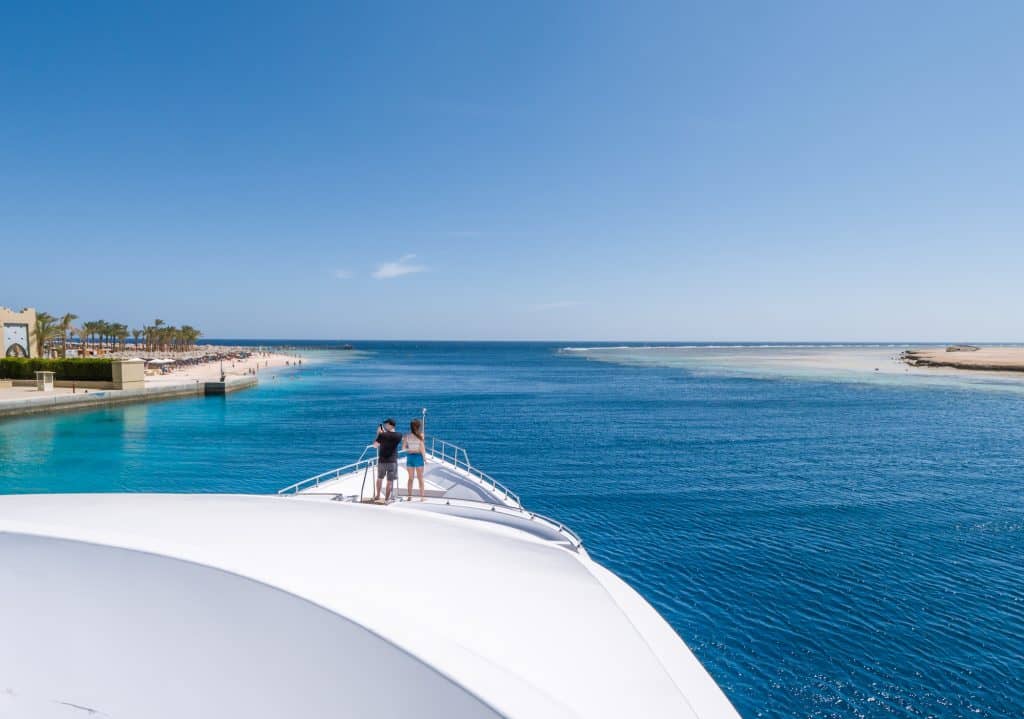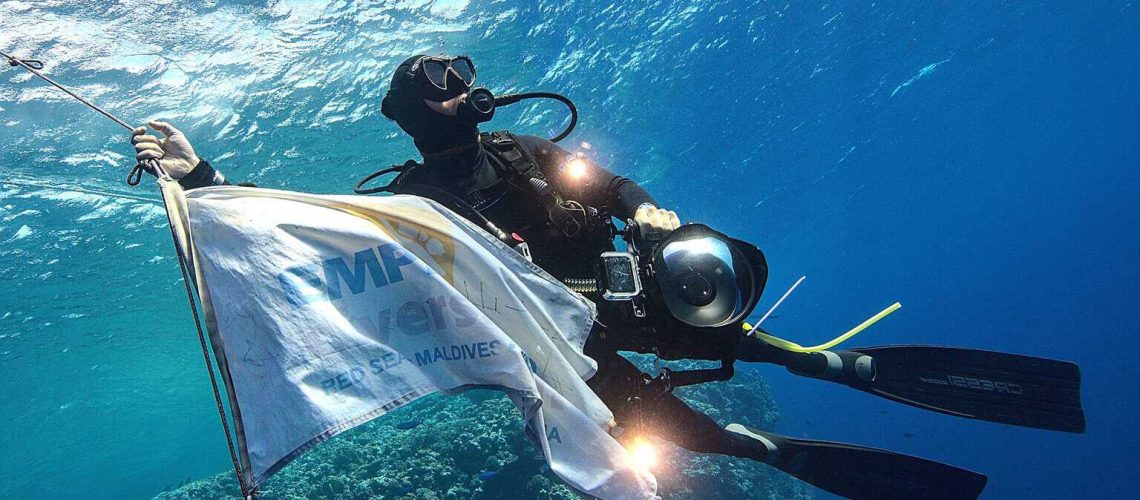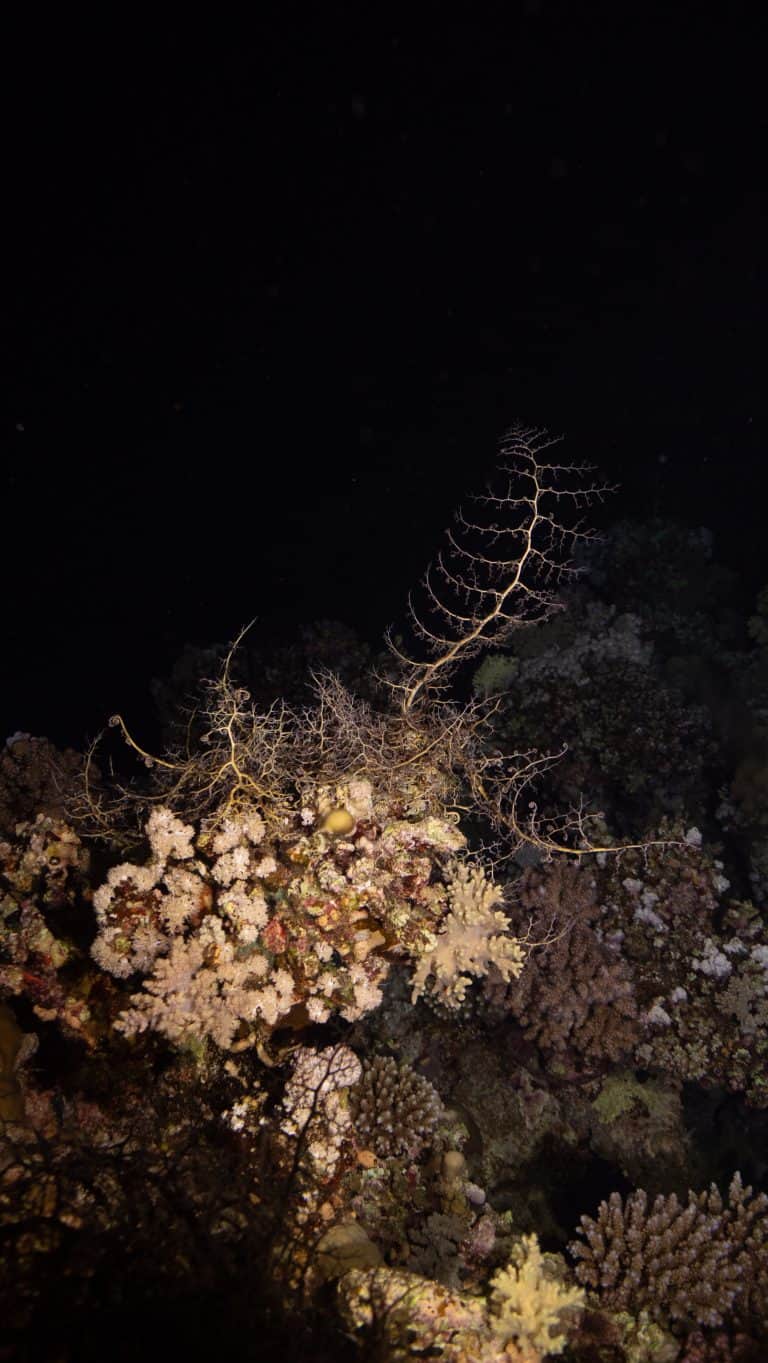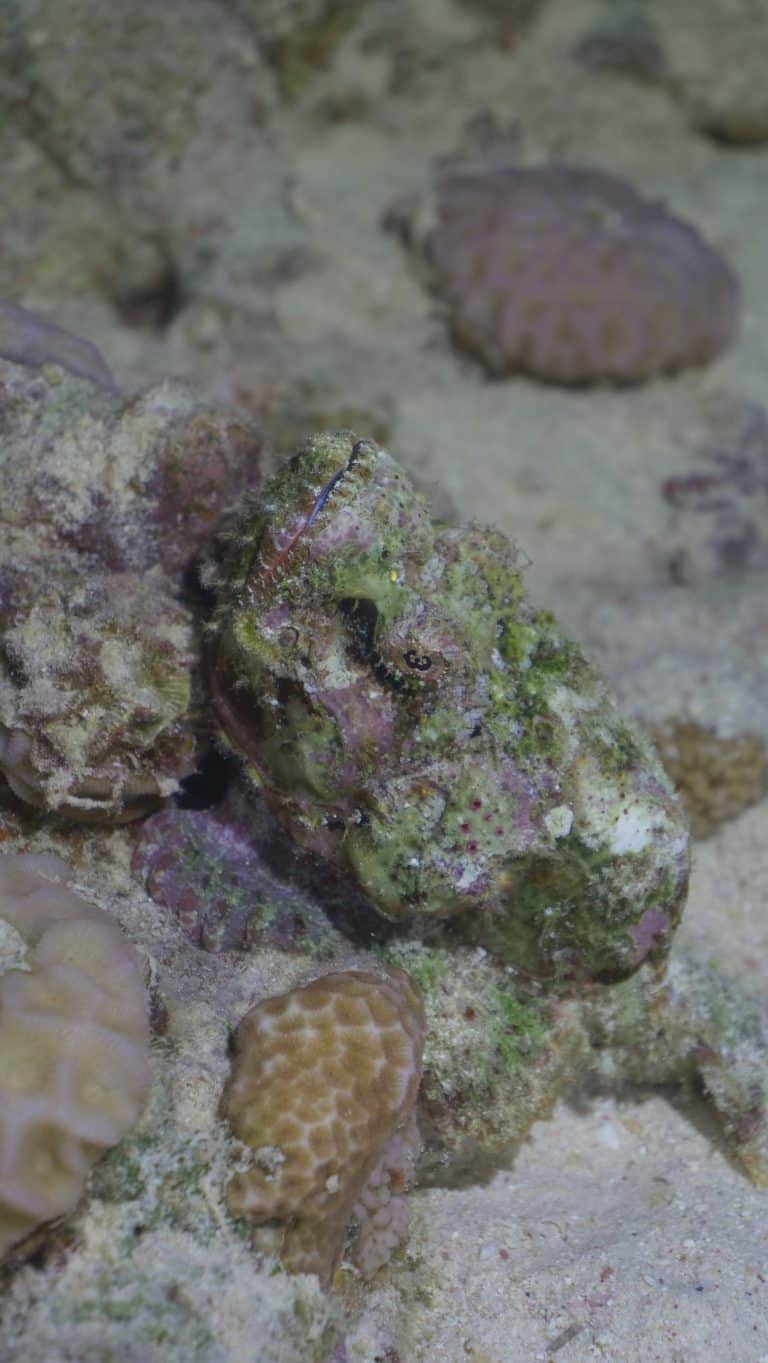Jake Davies is a Marine Biologist, HSE Professional scuba diver, underwater videographer and CAA licensed drone pilot. A regular contributor to TV such as BBC’s The One Show and Countryfile, Jake is also the Project Coordinator for Angel Shark Project: Wales. Through sharing videos and photos of amazing and unique underwater wildlife/habitats, Jake hopes to inspire others to go beneath the waves.
Heading out on a liveaboard to explore the world-famous reefs of the Red Sea had been high up on my dive wishlist for some time. I was drawn by the warm clear turquoise waters and diversity of marine life, particularly the many shark and ray species that can be seen here. I was especially keen to visit the offshore reefs towards the middle of the Egyptian Red Sea as I hoped to encounter Oceanic Whitetip Sharks (Carcharhinus longimanus) that are often found cruising here. Diverse Travel kindly offered to organise my trip aboard Emperor Elite: Safaga, Brothers and Elphinstone.
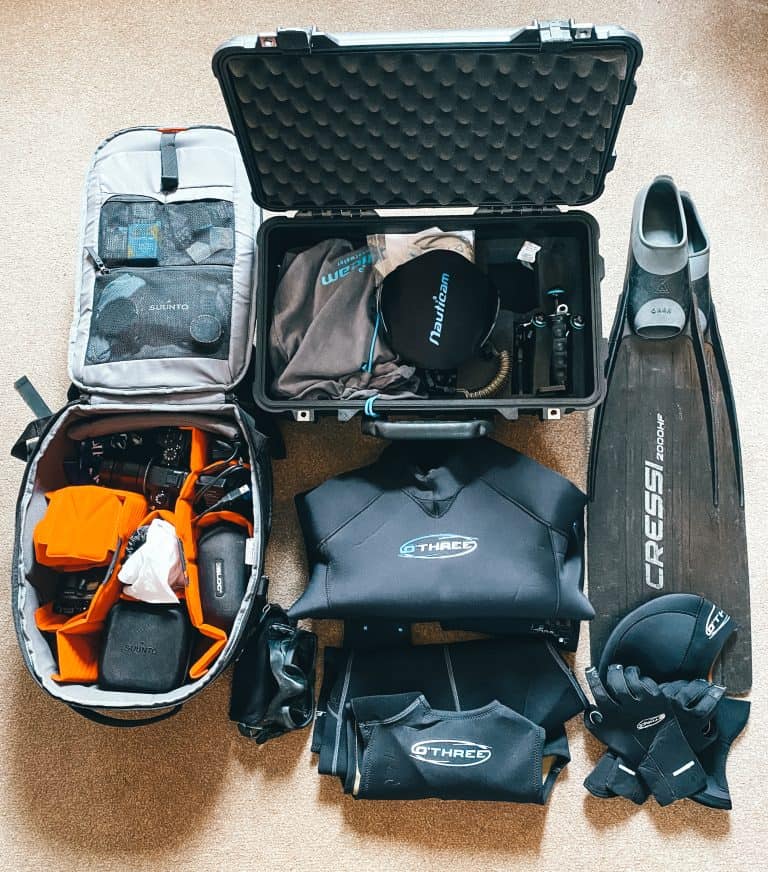
Let’s go diving!
I flew into Hurghada and after a three hour taxi ride South, we arrived in Port Ghalib. Unfortunately, I missed out on the view as it was already dark but the transfer was hassle-free. Arriving at the port, we boarded Emperor Elite and spent the evening completing paperwork, going through the week’s plan, and settling in and meeting fellow divers. Fortunately, as the boat wasn’t full, I had the luxury of a twin room to myself. With all the briefings complete and kit prepped, I was all set for an exciting week of diving.
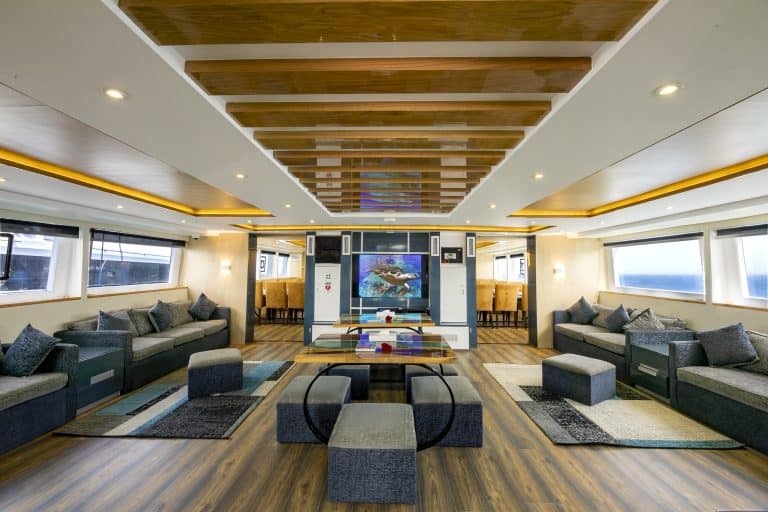
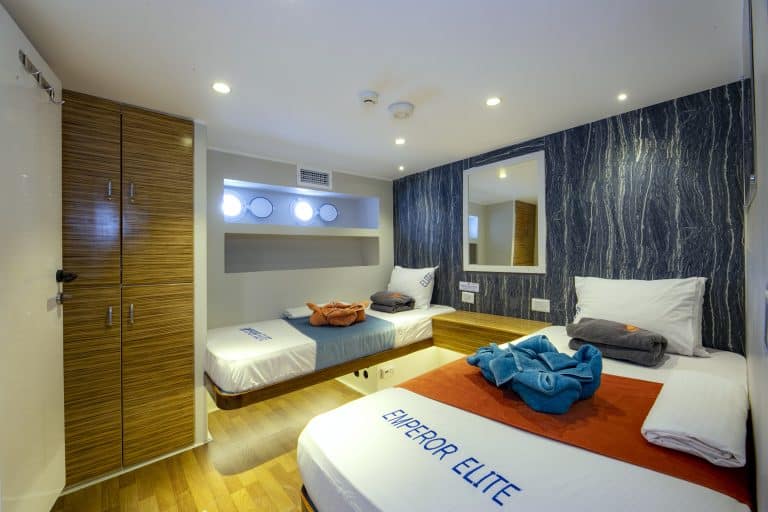
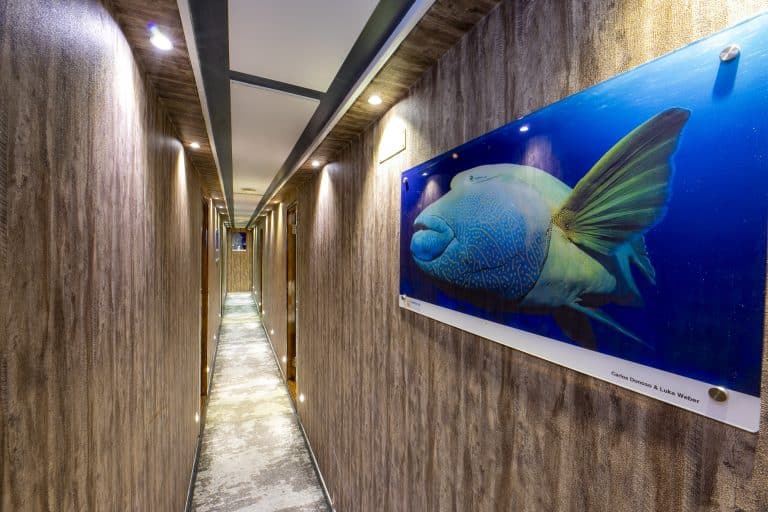
First Dives at Abu Dabab
Starting early the next morning, we moored up for a check dive at Abu Dabab 3. It was exciting to get into the turquoise waters to see what could be found around the reefs and coral atolls. Hitting the warm water – 26 degrees in November – gave that great weightless feeling and I was instantly blown away by the amount of life and colours that I could see. Considering this was just the first dive, it was amazing to see so many species of fish. The first 5-10 minutes were taken up with enjoying the scenery and doing some checks, before getting the camera on and starting to film this great location.
The next of the Abu Dabab reefs was Abu Dabab 2. Heading in along the rocky wall and through a swimthrough, we came to what’s left of the old safari boat ‘Heaven One’ which sank in 2005. Continuing round the crater-like reef, the walls were teaming with fish life and whip corals. As we ended the dive facing out to the blue water, there were plenty of larger fish species such as black and mangrove snappers that were shoaling onto of a rocky outcrop where the low light of the sun setting produced a calming, atmospheric scene.
After a short break with some light snacks whilst watching the sunset over the mountains, it was time to get the kit back on to explore the Abu Dabab reef 2 in the darkness. It’s always great to explore a reef during day and night as everything becomes completely different with nocturnal animals coming out to hunt. After a chilled 45 minute dive it was time to head back for dinner, where there was always plenty of good quality food.
Onto Elphinstone…
On day two, we steamed offshore to Elphinstone, a place that I’d heard so much about for so many years. My friends had told me so many stories of Oceanic Whitetips patrolling the reefs, and this was the location that I was looking forward to most. With a coffee and marble cake in hand, we had a detailed dive briefing about the North plateau on the East side.
To get here, we kitted up and had a short ride in the zodiac, where a negative descent was essential for two reasons: one, to make sure that you are in the lee of the current as soon as possible, and two, to minimise the time at the surface to reduce the attraction of any curious Whitetips. Arriving at the site, we headed in as a small group, swimming straight down to the reef. Within three minutes, a female Oceanic Whitetip was cruising a few metres above our heads. It was incredible to see this graceful shark gliding through the water. However, what I didn’t know until after the dive, was that she had been there the whole time, just a metre or two behind me as I entered the water, drawn closer by the sound of the zodiacs.
We continued to head northward to the tip of the plateau down to around 35m. Luckily, there was just a small current, which allowed us to reach the end and look down into the depths to see whether Hammerheads or even a Thresher could be seen. Not this time. Then, we headed back south along the reef with a small drift, looking around and watching Giant Trevally (Caranx ignobilis) cruising, shoals of Skipjack Tuna (Katsuwonus pelamis) and the Oceanic still around the surface. However, one thing did stand out, within the glare of the sun was a large tail and a shiny body, hard to make out from a distance due to the sun, but getting slightly closer the shape revealed a Black Marlin (Istiompax indica) that was just chilling near the surface. Absolutely incredible… and a species that it didn’t even cross my mind I would see.
Drifting along the reef, we ended back up at the stern of the boat where the dive ended. After some breakfast, we then got ready for the next dive which was on the South plateau on the West side. The plan was to mainly wait around the plateau to see what pelagics were passing, and after a short wait an Oceanic turned up along with some Trevallies and Barracuda. Then, we headed along the steep walls to see what could be found whilst being followed closely by Cornetfish (Fistularia commersonii) that don’t respect personal space at all!
Due to the weather being quite breezy, the decision was made to head back to Abu Dabab reef IV for the afternoon and night dive. Heading into this reef for the third dive felt like jumping into an aquarium. The visibility was incredibly clear, and the rocky outcrops dotted around provided some amazing underwater scenery. Everywhere you looked there was a huge amount of life. On the sand, numerous Blue-spotted Stingrays could be seen digging through the sand looking for invertebrates to feed on. At night, there were plenty of Lionfish (Pterois volitans) that were using the video lights to hunt small fish and shrimp on the reef. Back on board, and it was time for dinner, a special meal where camel steaks were served as part of a sit-down dinner rather than a buffet. The chefs and crew continued with their exceptional service and it was a great evening.
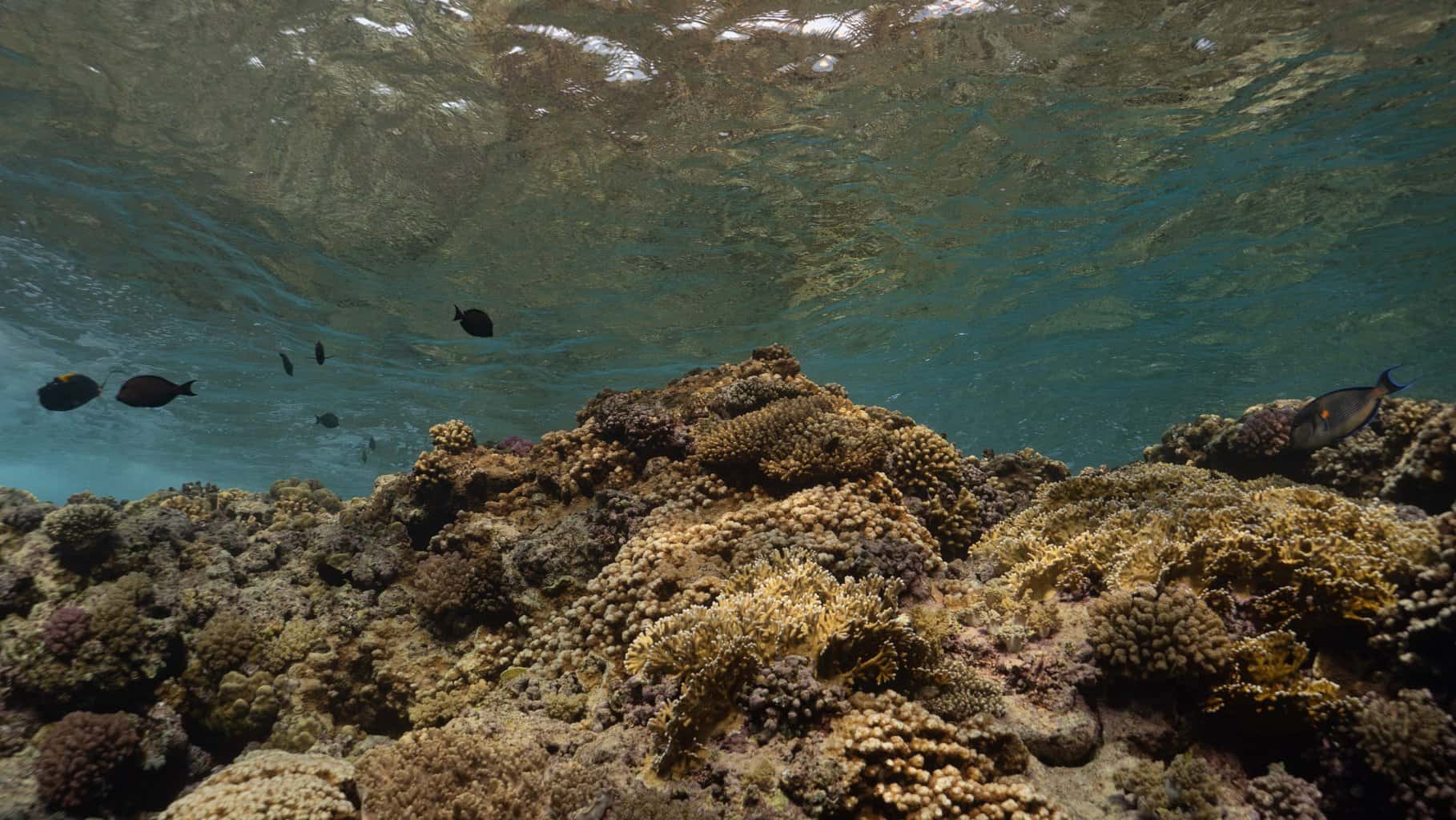
Weather issues but we make it to Big Brother!
It was day three, and time to head back to Elphinstone where we saw more Oceanic Whitetips including one large female who came in for a closer look at our group. It was so thrilling to be up close with this curious apex predator. Following two more great dives at Elphinstone, we headed north, getting closer to the Brothers. The Captain planned to overnight at Marsa Shouna which is a seagrass meadow site, sheltered from the high winds that were causing some concerns for the crossing. After some discussion and an onboard vote, it was decided to travel to the Brothers overnight after an evening and night dive. We headed into the water to explore the seagrass on the lookout for the famous Dugong. Unfortunately, after 60 minutes of searching, they weren’t to be found but there were a few huge Green Turtles (Chelonia mydas) that were grazing away on the meadow.
After dinner, everything was secured for what was going to be a rough crossing out to the Brothers. The strong northerly winds produced a swell that led to a challenging crossing with a few guests being seasick in the middle of the night. Once at the Brother Islands, where we moored to Big Brother, we were out of the swell making it more comfortable. Due to the conditions, there was only one other liveaboard at the site.
During the briefing, we were made aware that the sightings of sharks which include Oceanics and Hammerheads weren’t as high as they used to be. Jumping in and pulling ourselves along the mooring to reduce the fight against the current, we reached the wall of Big Brother, going down to 30m. With the swell running at the surface and the current on the East side, we defended and followed the West wall to see what could be found, keeping an eye out into the blue for anything big that could be seen. The dive was great, and the wall was full of impressive coral formations and life.
For the second dive we took the zodiacs over to the East side and went south to get a fast drift. Here there were even more impressive large corals. However, due to the weather worsening, the Captain made the decision that we should leave earlier than planned and not dive Little Brother. After setting off it was easy to see why he was concerned, especially as it was a six hour steam northward to Safaga, where the plan would be to get in one night dive at Shaab Sheer.
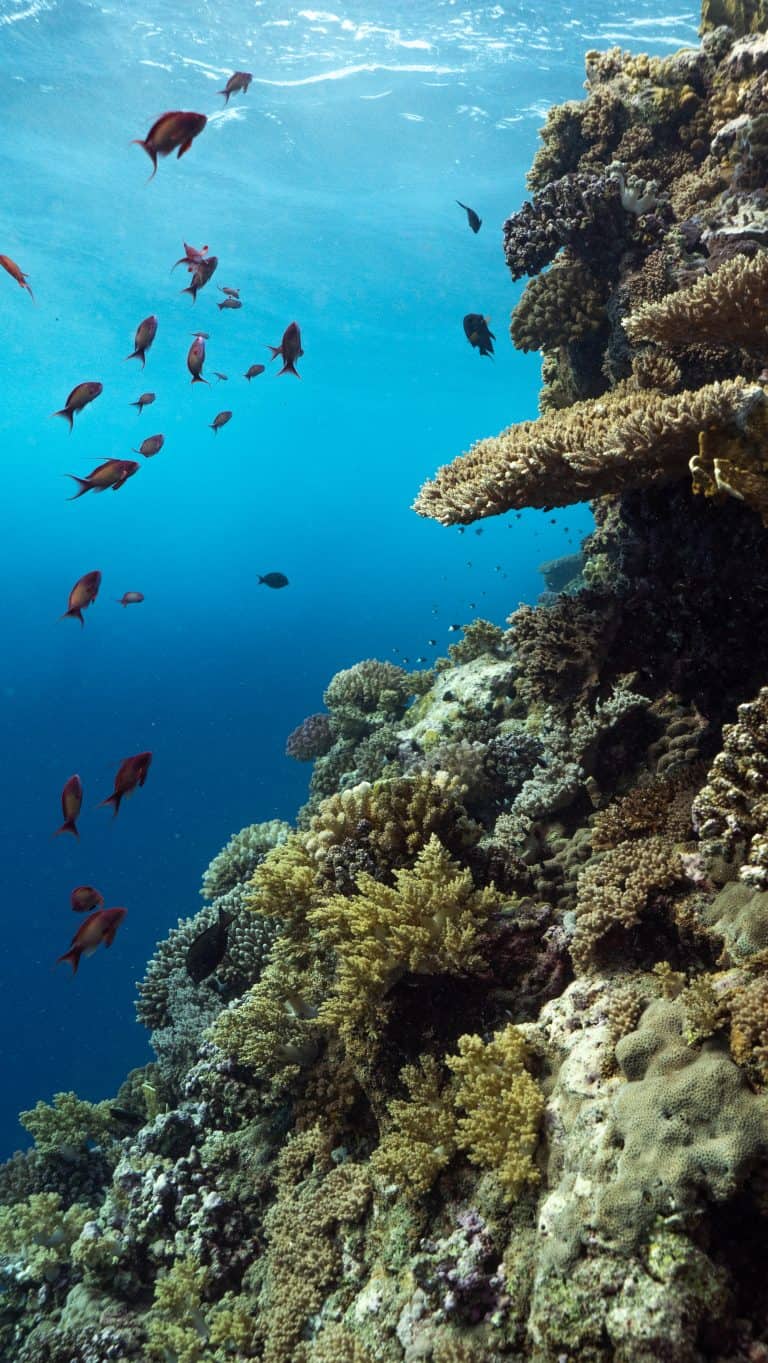
Safaga Sites
After a rough journey north that involved mainly sleeping on the sundeck, we arrived at Shaab Sheer for a night dive. Once in the water we were quickly surrounded by a large baitball where quite a bit of the dive was spent watching this underwater murmuration of silver baitfish whilst waiting in hope for them to bring in some larger predatory fish. It wasn’t to be, and so we headed to the reefs. We saw many common Lionfish, and it was interesting to watch the interaction between two venomous species, a Lionfish and a Scorpionfish; the dominating Lionfish intimidating the Scorpionfish to move out of its way. The tops of the rock formations were full of basket stars in a variety of different colours, each wide-open feeding but then swiftly bringing in their arms for protection once the lights illuminated them.
On day five we remained around Safaga, but due to a slight ear infection I had to skip the early morning dive at Panorama Reef. A little bit of rest and medication meant I didn’t have to miss out on the next three dives where we explored Panorama Reef on the Southwest side, along with Ras Abu Soma. At the latter, a wall dive sloping down to a sandy plateau before leading to a deeper drop off, we were on the lookout on the sand for the ‘Red Sea Walkman’ (Inimicus Filamentosus). We saw instead well-camouflaged Red Sea Stonefish (Synanceia Verrucosa). To end the night off and the last night dive, we were fortunate to spend time with a Giant Moray (Gymnothorax javanicus) hunting around the large boulders and reefs. This was really something that I was hoping to see during the night dives and luckily the last night delivered. I enjoyed watching this sleek predator weave through the rocks and into crevices as it captured small fish. A perfect way to the end the day’s diving at Safaga.
It’s time for Hurghada, and home…
For the last day onboard, we were diving around Hurghada at the Small Giftun reefs, but overnight the ear infection got worse and I made the decision not to dive, especially due to flying home on the afternoon of the next day. So, I enjoyed the sun and organised my kit ready for departure. For the last night onboard, the chefs went full out with an incredible buffet and impressive decorative fruit art. As they had been doing all week, the entire crew continued to go above and beyond, and all the guests were even provided with a gift from Emperor Divers as part of their 30th anniversary. A nice gesture and reminder of the holiday.
As we headed to Hurghada, the trip came to an end. And what a trip it was, with every element going beyond my expectations: the dive guides, the diving, the food, the service and hosting were all exceptional. The crew of Emperor Elite were so professional throughout the entire trip, especially when it came to changing the itinerary due to the weather. For anyone who’s keen on exploring the Red Sea and having a hassle-free trip, I would highly recommend organising it through Diverse Travel; Holly and Kirsty were amazing at getting everything organised. And the team onboard Emperor Elite made the trip so enjoyable and comfortable. I’m looking forward to getting the next trip organised and exploring some more dive destinations that are on the list, particularly for filming more shark, skate and ray species.
Thanks everyone for an incredible week exploring the diverse reefs of the Red Sea, and the great friendly hospitality from the crew onboard Emperor Elite. I hope to be back out again soon!
Header Photo: With thanks to Luis Pérez Berrocal.
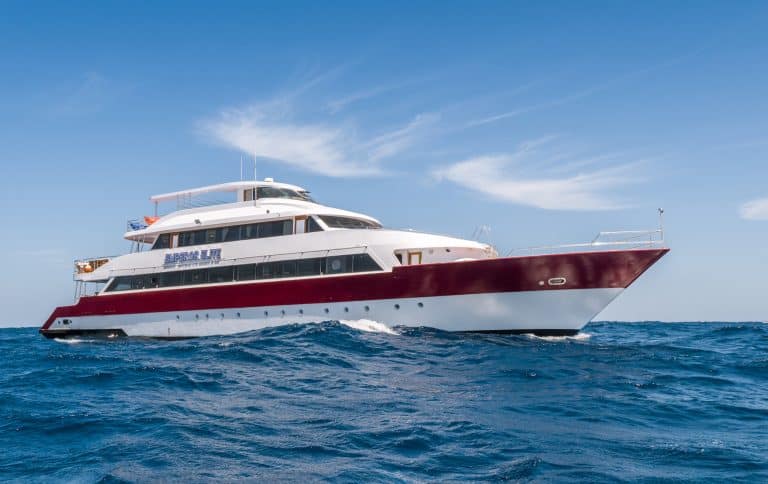
Interested in a Red Sea Liveaboard?
Liveaboard Holidays are ideal for:
- Maximising your time underwater – most liveaboards offer up to four dives a day
- Accessing remote dive sites – liveaboards often visit sites that aren’t reachable via day boats
- Increasing your dive skills – liveaboard holidays are ideal for intensive training or specialist courses
- Groups of friends or dive centres – why not charter a whole boat and take advantage of free place offers?
- When all you want to do is East, Sleep, Dive….Repeat… With like-minded divers!
Want to find out more about Red Sea Liveaboards? Click here to see our wide range of boats and itineraries.
Want to find out more about diving the Egyptian Red Sea? Click here to read our destination guide.
If you would like to chat about diving in the Red Sea, please give our dive travel experts a call on 01473 852002 or email us and we will be happy to tell you more!
